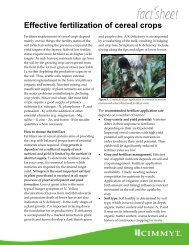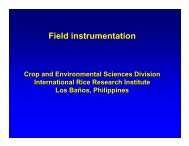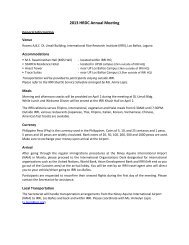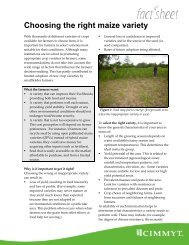Water management in irrigated rice - Rice Knowledge Bank ...
Water management in irrigated rice - Rice Knowledge Bank ...
Water management in irrigated rice - Rice Knowledge Bank ...
- No tags were found...
Create successful ePaper yourself
Turn your PDF publications into a flip-book with our unique Google optimized e-Paper software.
PrefaceWorldwide, about 79 million ha of <strong>irrigated</strong> lowlandsprovide 75% of the total <strong>rice</strong> production.Lowland <strong>rice</strong> is traditionally grown <strong>in</strong> bundedfields that are cont<strong>in</strong>uously flooded from cropestablishment to close to harvest. It is estimatedthat <strong>irrigated</strong> lowland <strong>rice</strong> receives some 34–43%of the total world’s irrigation water, or 24–30%of the total world’s freshwater withdrawals. With<strong>in</strong>creas<strong>in</strong>g water scarcity, the susta<strong>in</strong>ability, foodproduction, and ecosystem services of <strong>rice</strong> fieldsare threatened. Therefore, there is a need to developand dissem<strong>in</strong>ate water <strong>management</strong> practices thatcan help farmers to cope with water scarcity <strong>in</strong> <strong>irrigated</strong>environments.This manual provides an overview of technicalresponse options to water scarcity. It focuses onwhat <strong>in</strong>dividual farmers can do at the field level,with a brief discussion on response options at theirrigation system level. The manual is meant as asupport document for tra<strong>in</strong><strong>in</strong>g on water <strong>management</strong><strong>in</strong> <strong>rice</strong> production. It comb<strong>in</strong>es scientificbackground <strong>in</strong>formation (with many literature referencesfor further read<strong>in</strong>g) with practical suggestionsfor implementation. The target audience is people<strong>in</strong>volved <strong>in</strong> agricultural extension or tra<strong>in</strong><strong>in</strong>g withan advanced education <strong>in</strong> agriculture or water<strong>management</strong>, who wish to <strong>in</strong>troduce sound water<strong>management</strong> practices to <strong>rice</strong> farmers (such as staffof agricultural colleges and universities, scientists,irrigation operators, and extension officers).Introductory chapters analyze the water use andwater balance of <strong>rice</strong> fields, and water movement<strong>in</strong> the plant-soil system, and discuss the conceptsof water scarcity and water sav<strong>in</strong>gs. Consequencesof water scarcity for susta<strong>in</strong>ability, environmentalimpacts, and ecosystem services of <strong>irrigated</strong> <strong>rice</strong>fields are discussed at the end. An appendix <strong>in</strong>troducestwo simple <strong>in</strong>struments to characterize thewater status of <strong>rice</strong> fields that can help farmers <strong>in</strong>apply<strong>in</strong>g water-sav<strong>in</strong>g technologies.This manual was developed through the <strong>Water</strong>Work Group of the Irrigated <strong>Rice</strong> Research Consortium(which is co-funded by the Swiss Agencyfor Development and Cooperation). The sectionson aerobic <strong>rice</strong> were co-developed by the CGIARChallenge Program on <strong>Water</strong> and Food throughthe project “Develop<strong>in</strong>g a System of Temperateand Tropical Aerobic <strong>Rice</strong> <strong>in</strong> Asia (STAR).” Manypartners from national agricultural research andextension systems <strong>in</strong> Asia have contributed to thework described <strong>in</strong> this manual. The manual wasreviewed by Dr. Ian Willet (Australian Centre forInternational Agricultural Research) and Dr. Mohs<strong>in</strong>Hafeez (CSIRO Land and <strong>Water</strong>).The authorsLos Baños, 2007iv





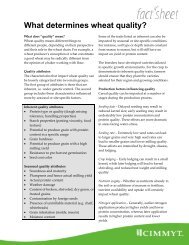

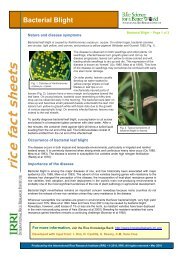

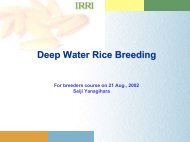
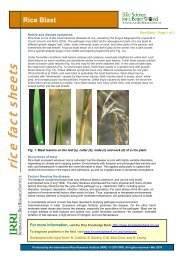
![International Standards' Organization â Rice Specification [ISO 7301]](https://img.yumpu.com/36696862/1/190x245/international-standards-organization-a-rice-specification-iso-7301.jpg?quality=85)

